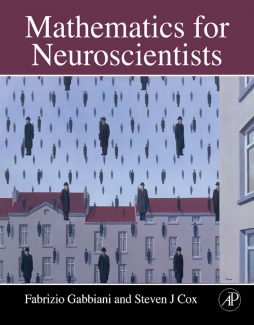
Additional Information
Book Details
Abstract
Virtually all scientific problems in neuroscience require mathematical analysis, and all neuroscientists are increasingly required to have a significant understanding of mathematical methods. There is currently no comprehensive, integrated introductory book on the use of mathematics in neuroscience; existing books either concentrate solely on theoretical modeling or discuss mathematical concepts for the treatment of very specific problems. This book fills this need by systematically introducing mathematical and computational tools in precisely the contexts that first established their importance for neuroscience. All mathematical concepts will be introduced from the simple to complex using the most widely used computing environment, Matlab.
This book will provide a grounded introduction to the fundamental concepts of mathematics, neuroscience and their combined use, thus providing the reader with a springboard to cutting-edge research topics and fostering a tighter integration of mathematics and neuroscience for future generations of students.
- A very didactic and systematic introduction to mathematical concepts of importance for the analysis of data and the formulation of concepts based on experimental data in neuroscience
- Provides introductions to linear algebra, ordinary and partial differential equations, Fourier transforms, probabilities and stochastic processes
- Introduces numerical methods used to implement algorithms related to each mathematical concept
- Illustrates numerical methods by applying them to specific topics in neuroscience, including Hodgkin-Huxley equations, probabilities to describe stochastic release, stochastic processes to describe noise in neurons, Fourier transforms to describe the receptive fields of visual neurons
- Allows the mathematical novice to analyze their results in more sophisticated ways, and consider them in a broader theoretical framework
"I really think this book is very, very important. This is precisely what has been missing from the field and is badly needed. Non-physicists or non-mathematicians coming to neuroscience try hard to get up to speed in the basic maths needed to get by but give up because there is no clear explication of this."
--Dr. Kevin Franks, research fellow, Richard Axel's laboratory Columbia University, NYC
"The idea of presenting sufficient maths to understand the theoretical neuroscience, alongside the neuroscience itself, is appealing. The inclusion of Matlab code for all examples and computational figures is an excellent idea. Many readers will want to use and explore the code, either to directly aid their understanding, or as the basis for their own ongoing research, and Matlab is a widely used tool in this area."
--David Corney, research fellow, Institute of Ophthalmology, University College London
